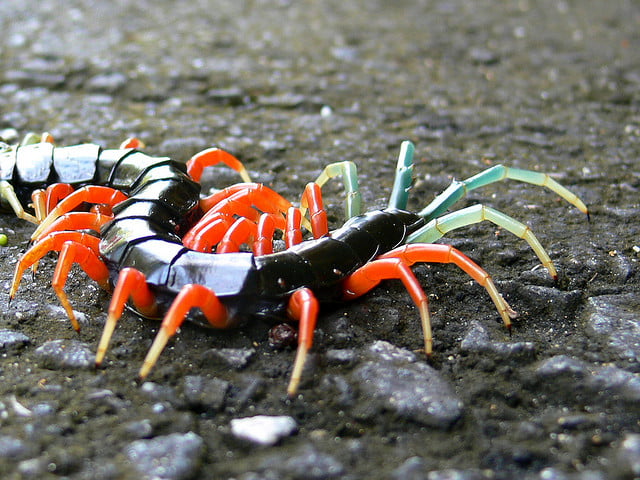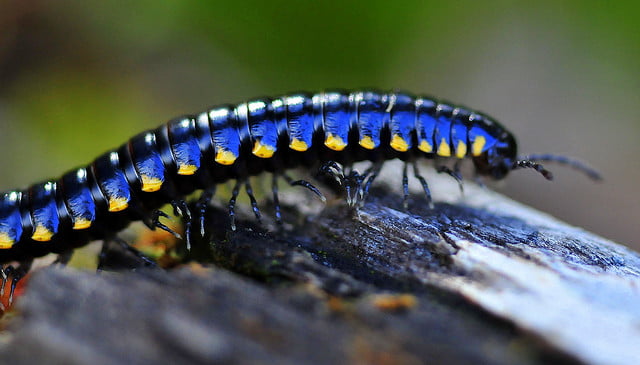Centipedes, those many-legged venomous creatures that startle us in our homes and gardens, have been genetically sequenced for the first time. An international team of over 100 scientists has now revealed how this humble arthropod’s DNA provides new insight into the diverse forms of life that came to be on our planet.
From the primitive to the complex
Centipedes are members of the arthropod family, a group that combines numerous species including insects, spiders and other animals, characterized by having an external skeleton and a segmented body. Until now, the only class of arthropods whose genome had not been sequenced was the myriapods, which include centipedes and millipedes. For this study, the researchers sequenced the entire genome of the centipede Strigamia maritima, because its primitive features can help us understand more complex insects.
SEE ALSO: Haifa Researchers Able To Control Insect’s Movements
 According to Prof. Ariel Chipman of the Hebrew University of Jerusalem, senior co-author of the study, the genetic data reveal how creatures transitioned from their original dwelling-place in the sea to living on land.
According to Prof. Ariel Chipman of the Hebrew University of Jerusalem, senior co-author of the study, the genetic data reveal how creatures transitioned from their original dwelling-place in the sea to living on land.
“The use of different evolutionary solutions to similar problems shows that myriapods and insects adapted to dry land independently of each other,” said Chipman. “For example, comparing the centipede and insect genomes shows that they independently evolved different solutions to the same problem shared by all land-dwelling creatures — that of living in dry air.”
Same, same, but different
According to Chipman, the study found that despite being closely related to insects, the centipede lacks the olfactory gene family used by insects to smell the air, and thus developed its own air-sniffing ability by expanding other gene families not present in insects.
In addition, Chipman said, this specific group of centipedes lives underground and have lost their eyes, together with almost all vision genes and genes involved in the body’s biological clock. They maintain enhanced sensory capabilities enabling them to recognize their environment and capture prey.
Sign up for our free weekly newsletter
SubscribeUnderstanding the world around us, and ourselves
In explaining the purpose of the research, Chipman said: “If we have a better understanding of the biological world around us, how it operates, and how it came to be as it is, we will ultimately have a better understanding of ourselves.”
SEE ALSO: Israeli Experts Called Upon To Help Preserve The Galapagos Islands
Published in the latest edition of PLoS Biology, the research is a collaborative effort by over 100 scientists from 50 institutions. Thousands of hours went into looking at specific genes in the centipede genome, with each researcher examining at a limited set of genes or specific structural characteristics.
While early studies of genomics focused on humans, as sequencing equipment and expertise became more readily available, researchers are now expanding into animals directly relevant to human understanding and well being. In the latest research, genomic sequencing has become more broad-based, investigating the workings of the world around us.
According to Chipman, the research will have applications for other researchers ranging from conservation to dealing with crop pests.
The Alexander Silberman Institute of Life Sciences is the largest research institute in the Hebrew University’s Faculty of Sciences. Members of the Institute of Life Sciences devote themselves to two parallel and complementary endeavors: advanced scientific research at the forefront of contemporary biological sciences, and broad-range biological education aimed at endowing the students with the knowledge, skills and research tools essential for participating in the continuously changing field of life sciences. The Institute of Life Sciences maintains diverse undergraduate (B.Sc.) and graduate (M.Sc. and Ph.D.) teaching programs.
Photos: Chris Willis/ Tim Melling/ Prof. Chipman
Related posts

Resilient And Nutritious New Plant-Based Milk Aims To Make A Splash

Chocolate From Cultivated Cocoa Comes Without Environmental Toll

Plastic Fantastic: Startup Takes PVC Back To Its Crude Oil Roots




Facebook comments